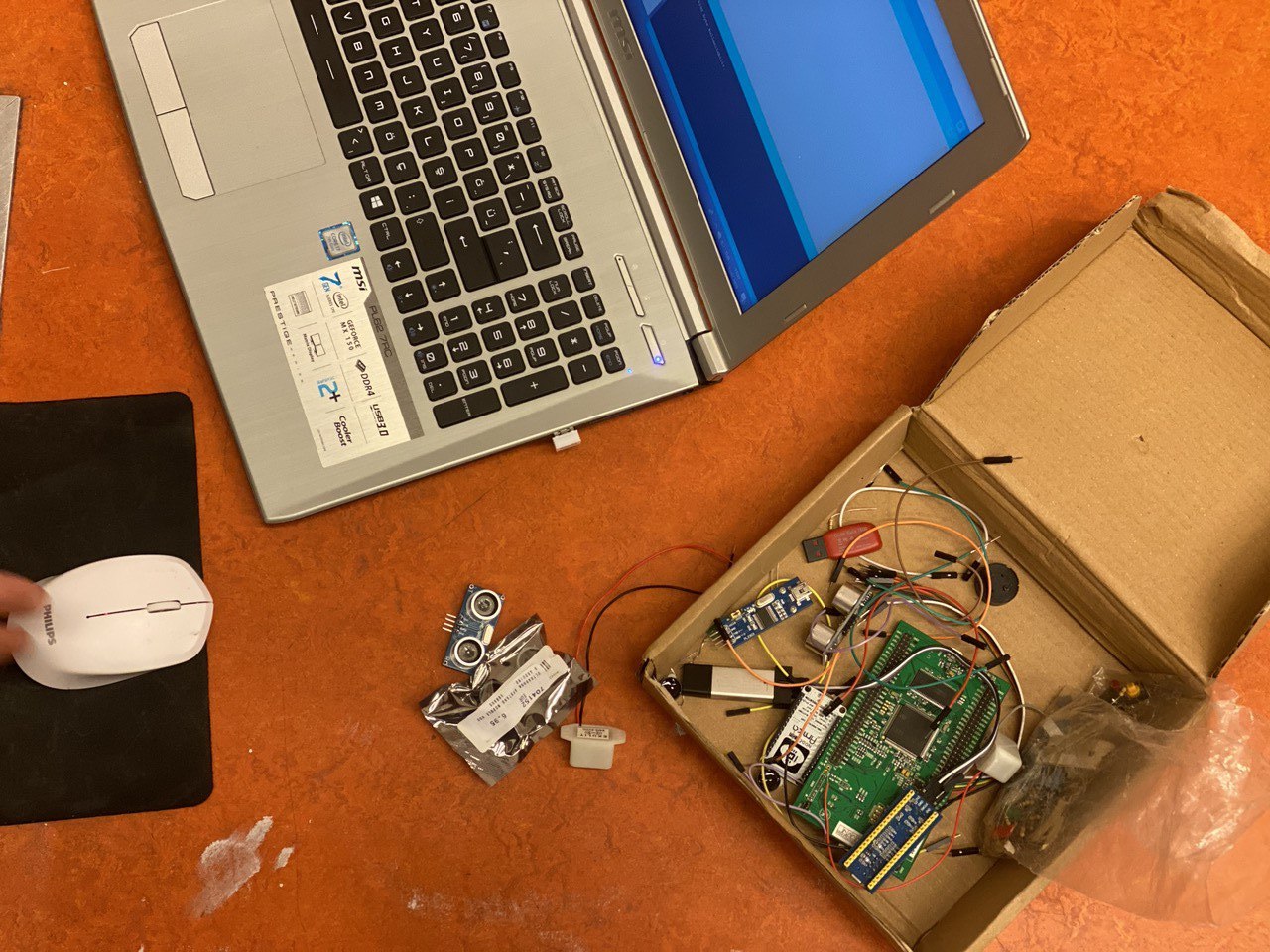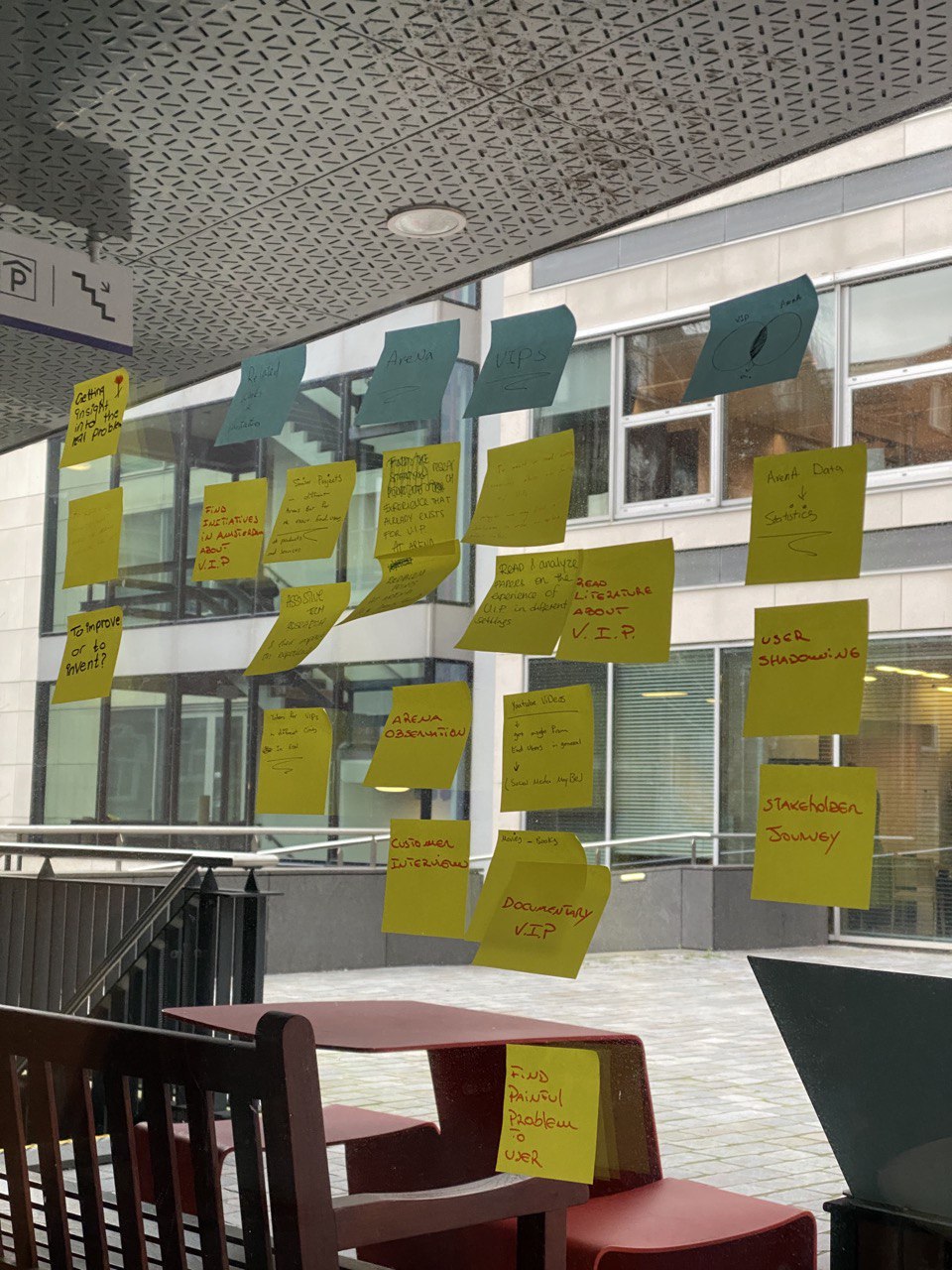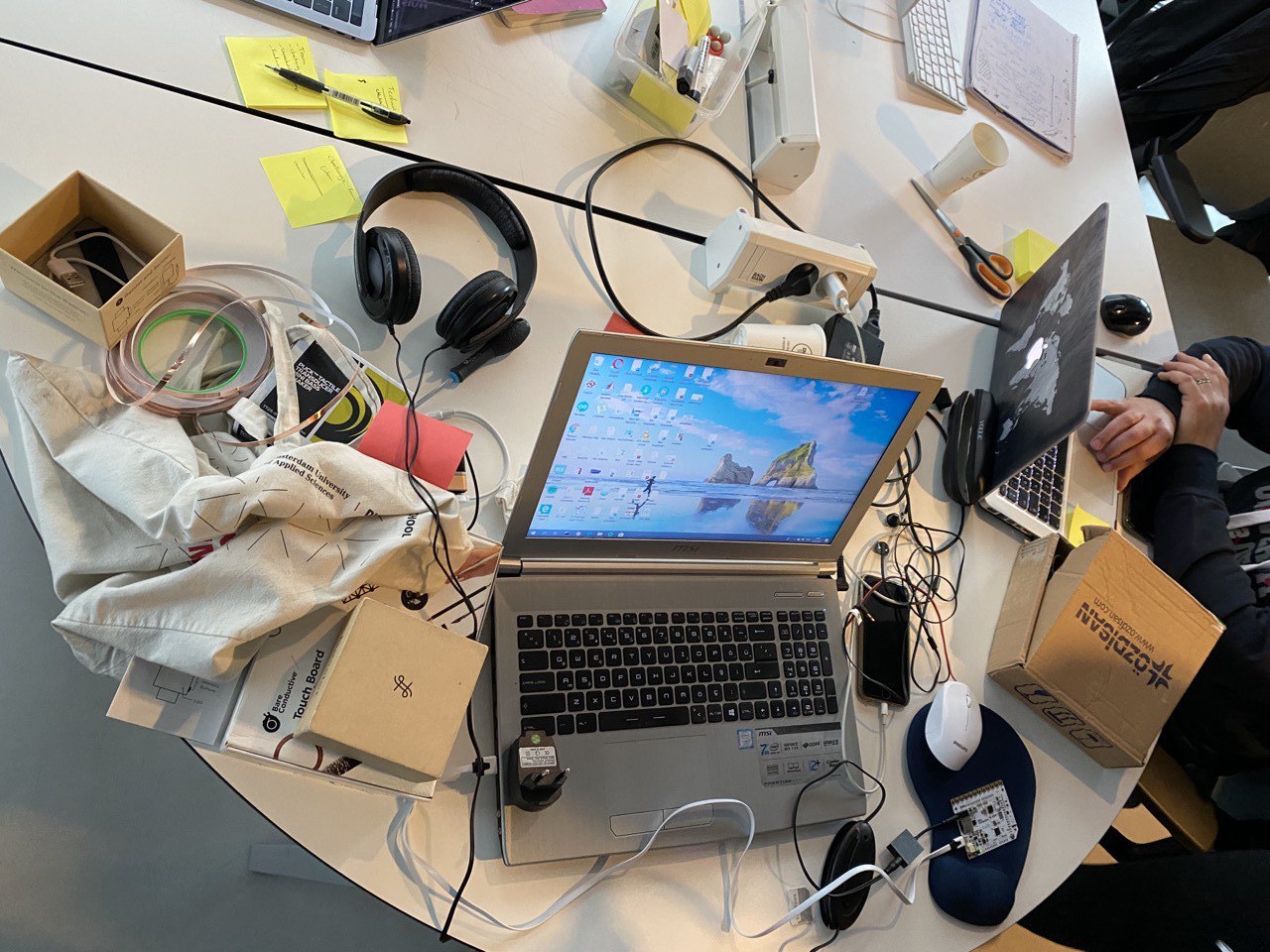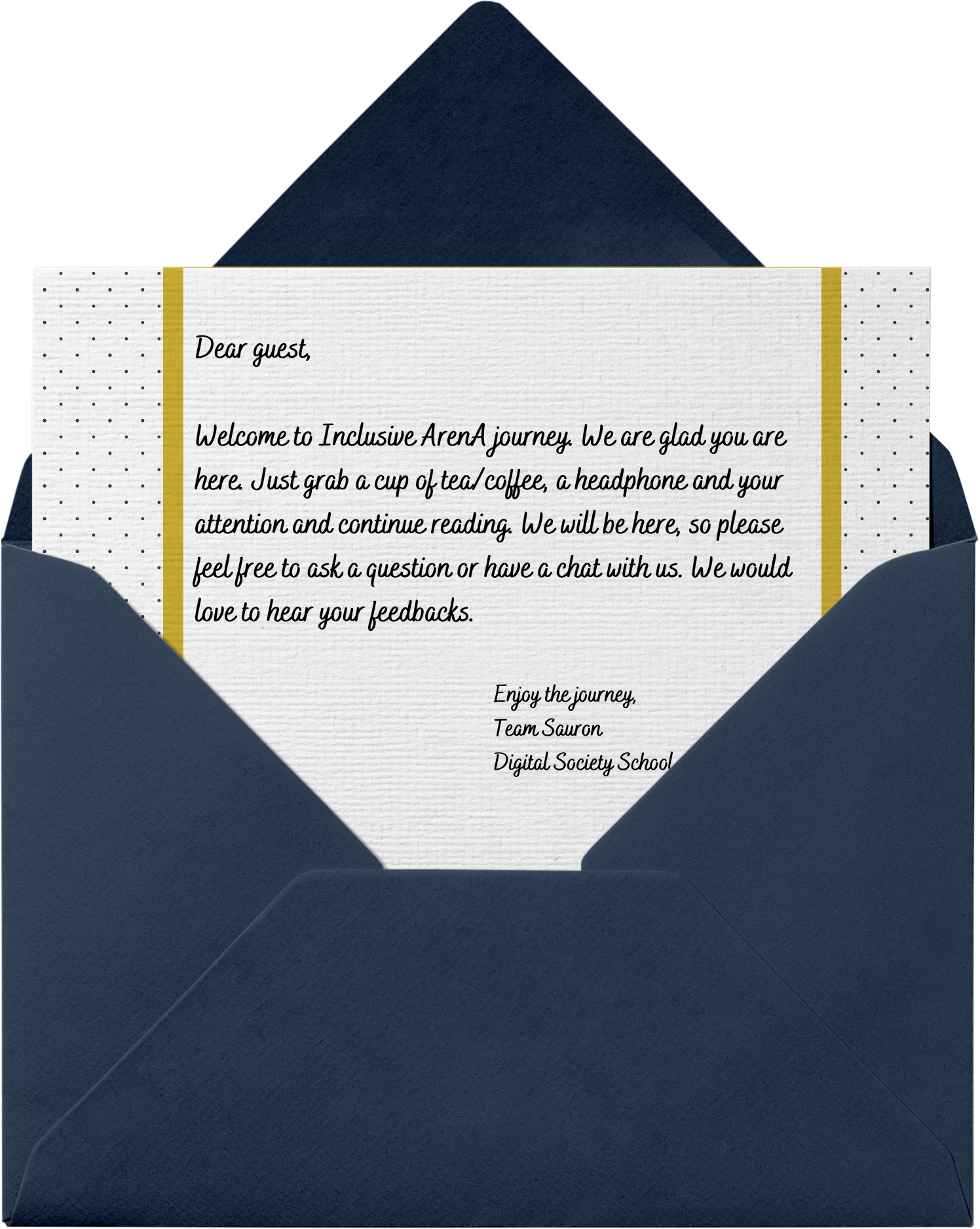
Inclusive ArenA
A fan experience designed for visually impaired people by Sauron Team in Digital Society School / Johan Cruijff ArenA in Amsterdam

Context
Imagine being a football fan, visiting Amsterdam, there is no way you would miss going to Johan Cruijff’s ArenA. You will go online and book a ticket, take a tram or metro or even being Dutch, riding a bicycle, arriving at the ArenA, check in your ticket and enjoy the tour around the stadium. Sounds easy, right? Now imagine not being able to see, like almost 285 million people in the world. What will change in this experience? Everything.

Moreover, the sustainable development goals considered in this project and context were:
SUSTAINABLE DEVELOPMENT GOAL 9
Build resilient infrastructure, promote inclusive and sustainable industrialization and foster
innovation
SUSTAINABLE DEVELOPMENT GOAL 17
Strengthen the means of implementation and revitalize the global partnership for sustainable
development.
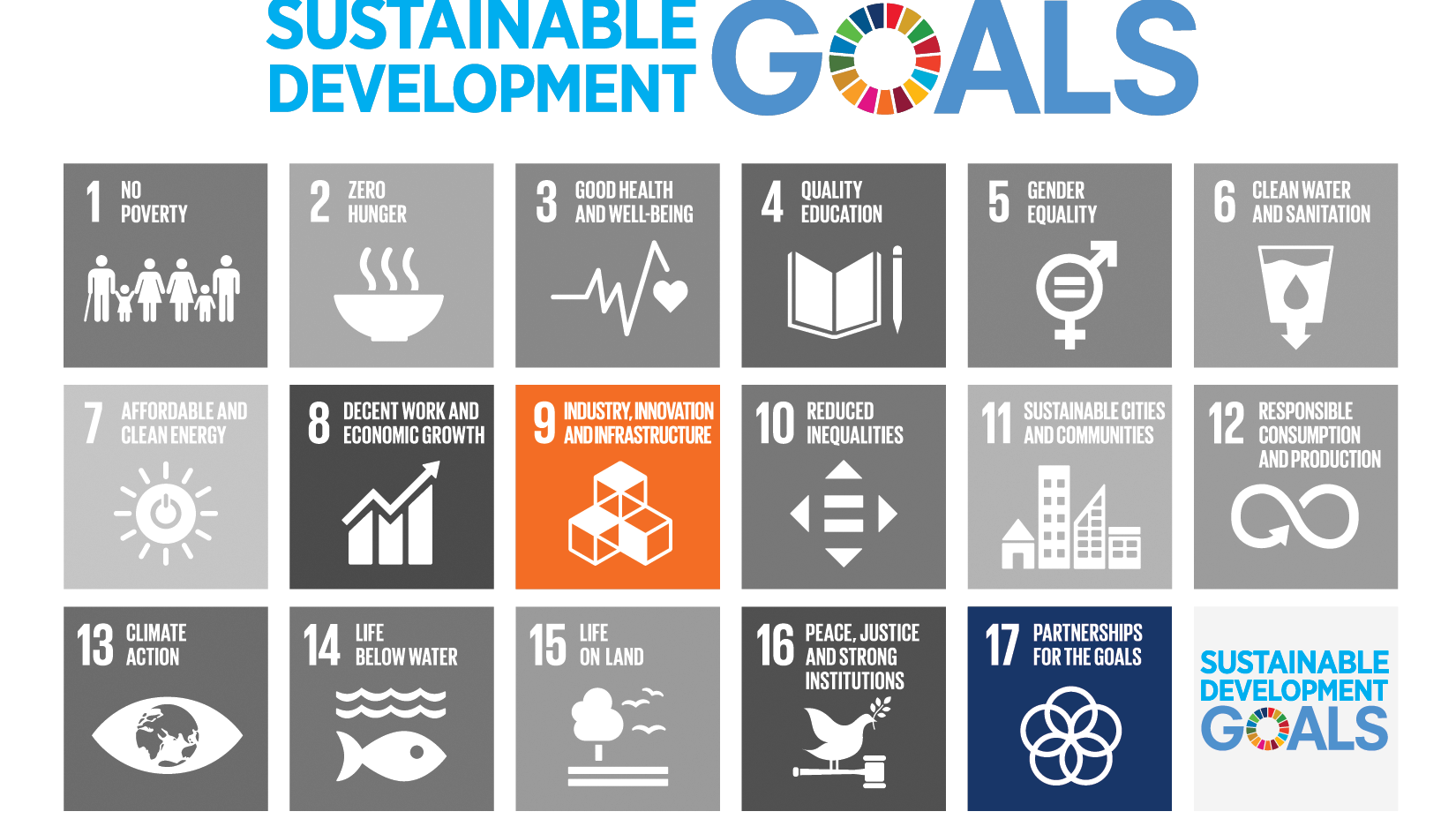
Makers Jam
When this topic of the project was introduced to us, the first step was to be creative and challenge
ourselves, our skills, and passion. We participated in a two-day marathon of finding a solution and
roughly implement it. After a brainstorming session, we decided to design an unusual experience to
raise
awareness. "A blind football experience for sighted people"
We wanted to raise awareness about challenges VIP face daily. The blind football experience was
created with the help of a football goal, ball and a blindfold. A person would wear a blindfold and
try
to score the ball into the goal. Once someone succeeded, there was a cheering sound playing.
Although
being blind is different from wearing a blindfold, it could
count as the fastest way to create this experience for our audiences and raise
their awareness what problems VIP face. Here is a video of a user interacting with our prototype.
Research Findings
This topic was new to all of us and we didn't have any similar experience in this matter, more importantly we couldn't put ourselves in VIP (visually impaired people) shoes and understand the problem. So we conducted an extensive research on this matter to have a better understanding on how to create a useful solution for the VIP. You can download read the summary of our findings in this handbook.
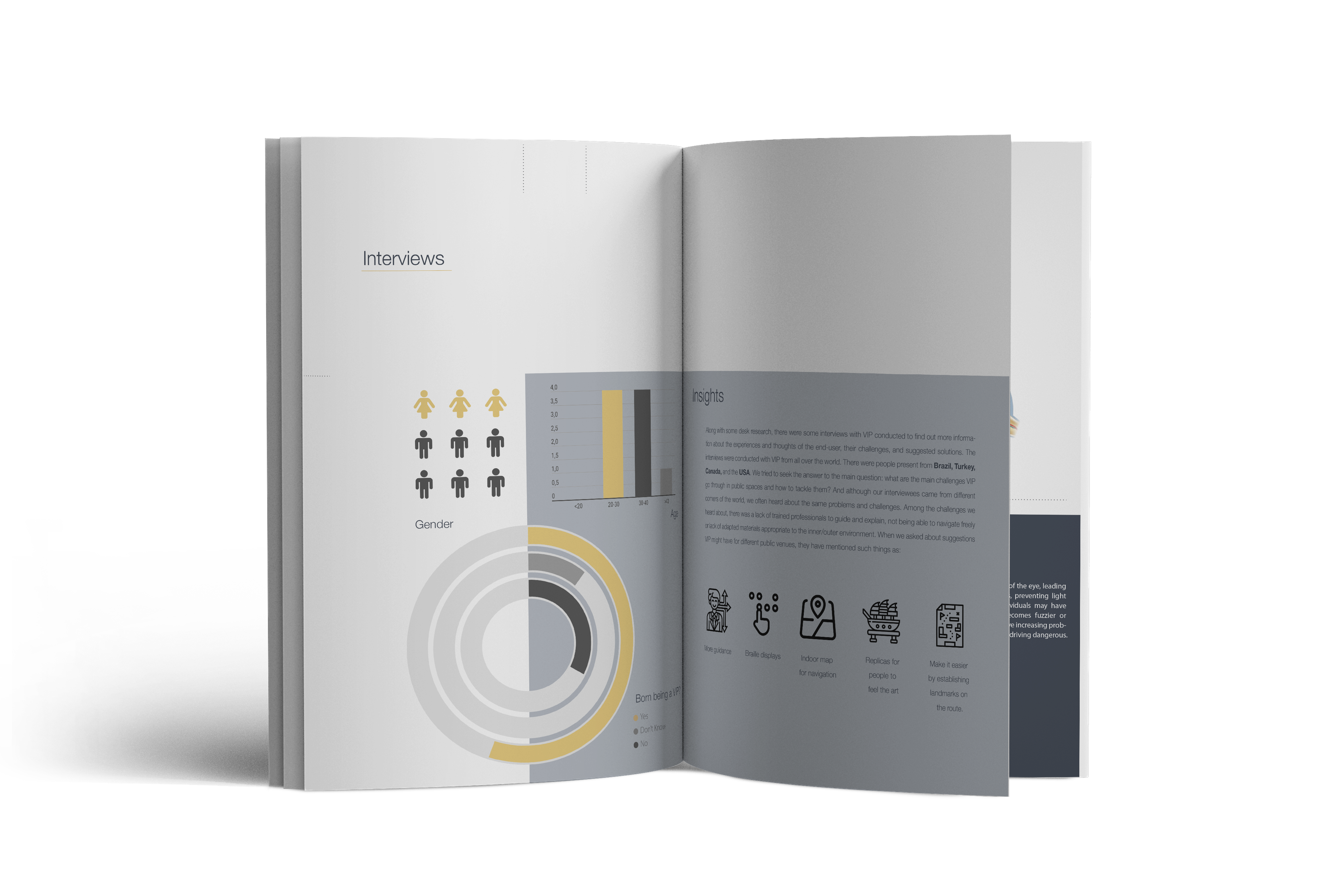
Process
The design methodology we chose to use in our project was Participatory Design, which requires getting feedback from users in every step of the project. Brainstorming sessions for ideation and prototyping to test the ideas are other parts of this methodology. We contacted people with visual impairment on social media (Twitter and Instagram), forum websites like Reddit, Youtube etc. We also conducted a survey to get information from them. You can read the detailed story of our project in Medium.
Prototype 1
The first prototype includes a 3D model of the ArenA and conductive nodes with a soundboard. Users touch the nodes of the stadium on the 3D model, which they would like to explore. By contacting the nodes, they will hear a designed 3D sound, which was recorded from the different regions of the ArenA during the real game. That represents not only the anthems played before the game but also the atmosphere of the stadium. Fans chanting and jumping during the game or marching while singing the anthem, which is part of the fan experience. We used Bass Shaker Tactile Transducers to create real game experience for the users with the help of haptic feedback..

pandemic
The coronavirus came into the picture and was spreading through the world. In the Netherlands, the government took action and implemented the measurements for social distancing, staying home, and working remotely. In this pandemic situation, we couldn’t work in the DSS studio, thus we had online meetings, used online tools for brainstorming, presenting, and prototyping. As mentioned earlier, you can read our project story is in Medium.

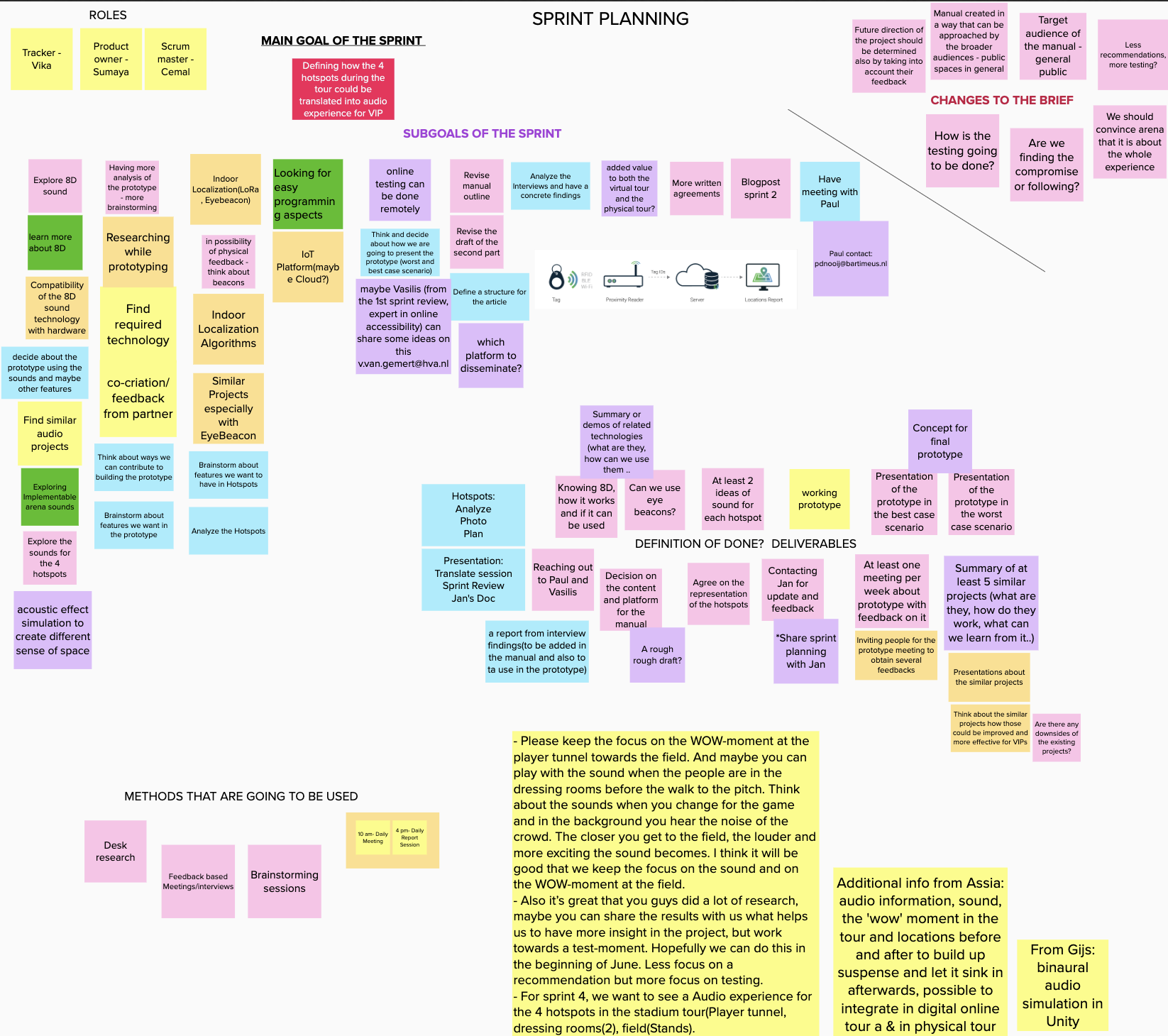

Prototype 2
At the beginning of the second sprint, the corona crisis happened. Because of the pandemic, the ArenA and DSS were closed, and we started working remotely. We got the idea of creating an online experience for the VIP; that’s why we developed a computer application that was based on voice recognition and feedback system. The interaction can be explained like this, when the users open the app, the application starts guiding them through an online tour by giving information about the stadium and AJAX Football Club. Also, the users can visit the other hotspots of the ArenA whenever they want by simply commanding it through voice. For this prototype, we mainly coded on C#, SpeechRecognitionEngine was used for the implementation of voice recognition.
prototype 3
Our third prototype aim was to track the position of the users in the ArenA with the help of the indoor localization. Room-related sounds would be played according to the location of the users. We decided to work on BLE Technology for this prototype, so we started to explore the iBeacons. However, when we tried to use the iBeacons on C#, we faced a lot of problems with regards to Interop Services of C#, which would require a lot more time and research to find a solution than we had. Moreover, since we decided to build a real-time map and predict the exact position of the user in the ArenA, we needed to receive an RSSI signal, which is an accurate signal in real-time. When checking the dB of the signal by downloading the official app of the iBeacon, we realized that the dB of the signal was not stable. Also, we got feedback from one of the experts present at our demonstration, pointing out the same problem with the implementation of the iBeacons in crowded places. Thus, in the next sprint, we had yet to solve these issues and come up with a new, improved idea.
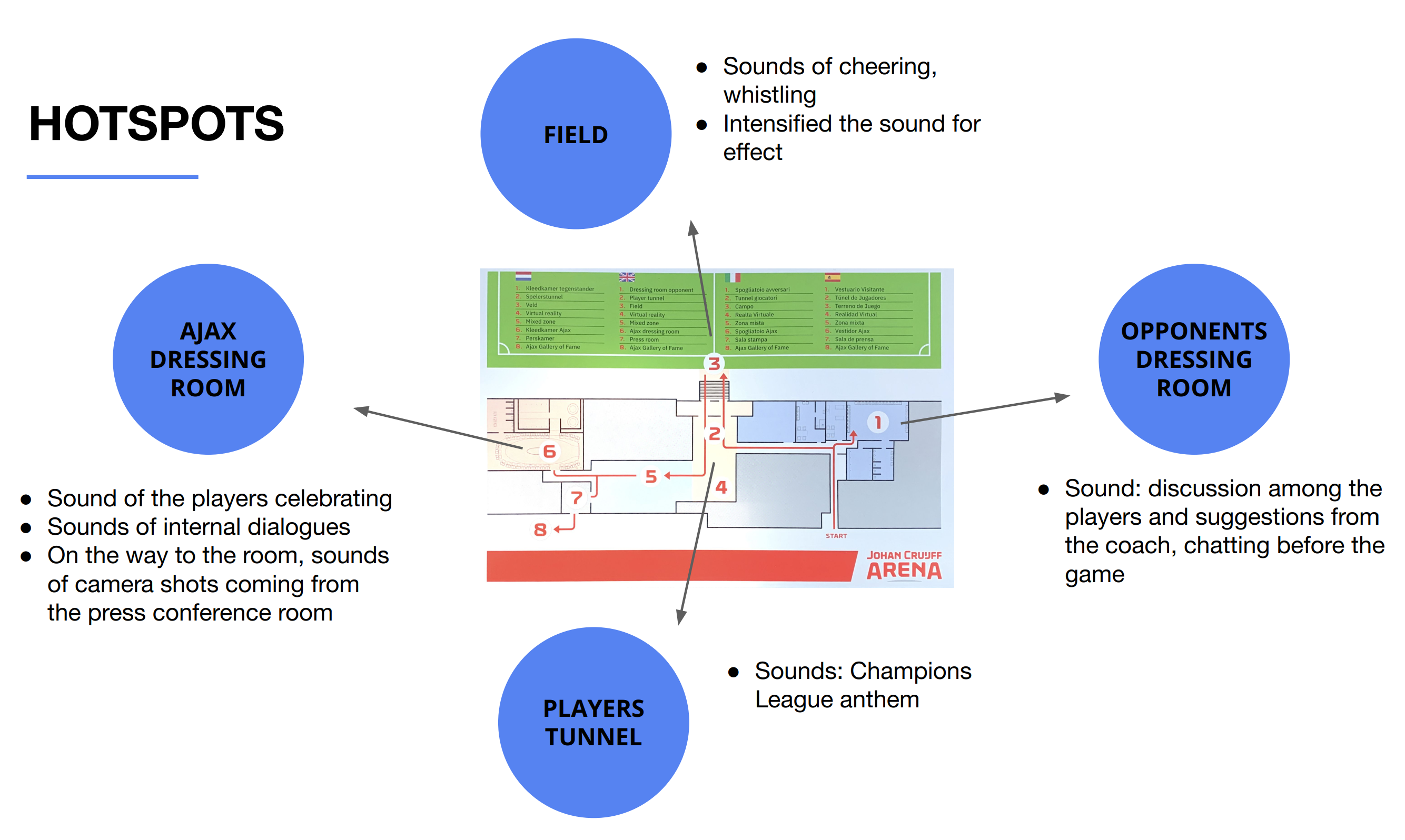
Testing
sound
During our research, we learned that visually impaired people rely on the hearing sense to imagine how their environment looks like. Because of this, a recording designed to give an immersive experience through audio and touch during the guided tour at the Johan Cruijff Arena. Three different soundtracks were downloaded from Youtube and mixed in a way that gives the impression the sound is coming from different directions around the user’s head. The resulting track simulates the user experience of listening to the champions league anthem from the middle of the Arena ́s pitch.
Here is the place when you should put on your headphones and experience the 3D sounds
Hotspot 1 - Ajax Room
Hotspot 2 - Pitch
Hotspot 3 - Opponents Locker Room
Inclusive ArenA Application
Since our main aim was to track the VIPs in the ArenA, we came up with an improved idea-"Inclusive ArenA Application." Therefore, we initiated to work on Yolo and Computer Vision. After we configured everything, our prototype could detect visitors and count the number of visitors in the ArenA. By counting the number of visitors, the detection system will decide that there is a group of visitors in a specific room. Then, since the camera unit is connected to the server, the number of visitors and the type of room will be on the server. Therefore, as our mobile app is also connected to the same server, it will be accessing the number of visitors, and the type of room will be on the server, too. Furthermore, room-related sounds will be played according to the location of the users. We tried to include both touching and hearing senses in this application, so it comes to the app, in order to create a user-friendly experience for visitors throughout the tour, the app was designed to be used with the voice command.
In this video the interaction of the user with the prototype is shown.
You can learn more about features of Inclusive ArenA application in the following picture.
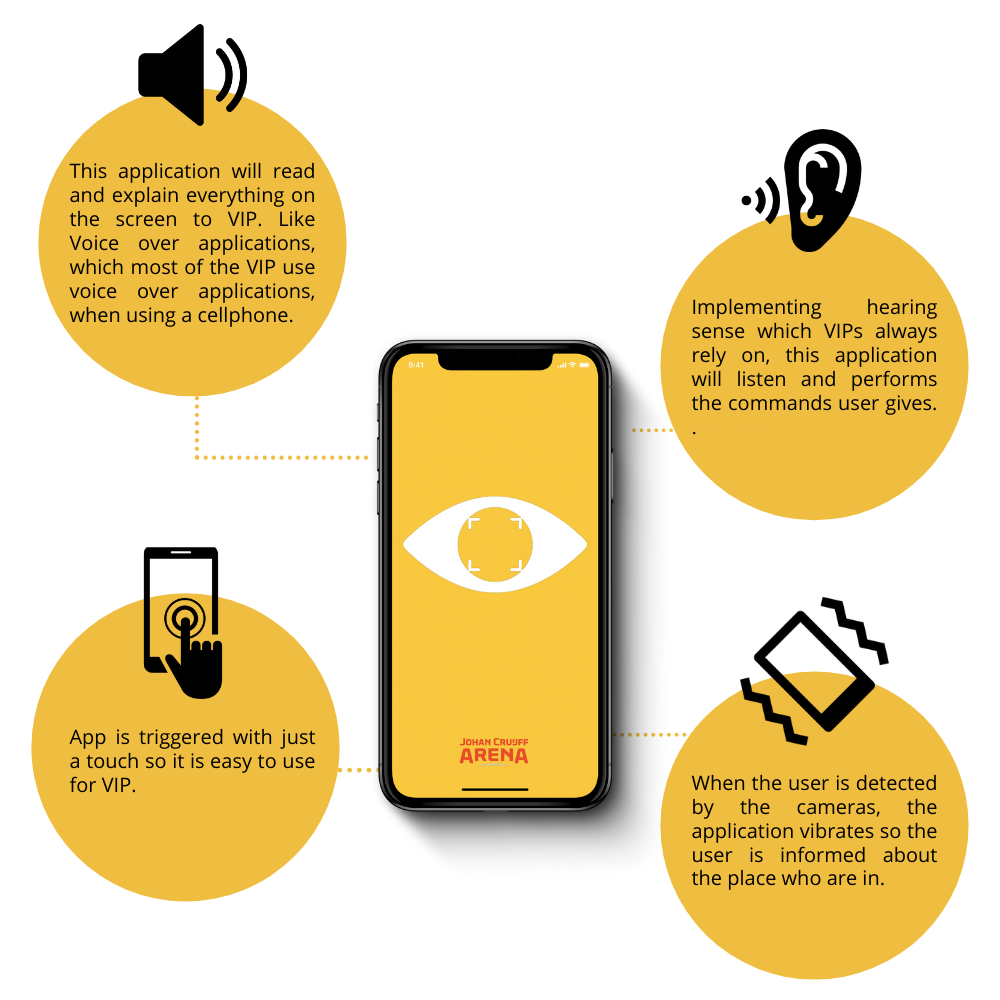
Interactions which user has with the application is explained in the next picture in details.
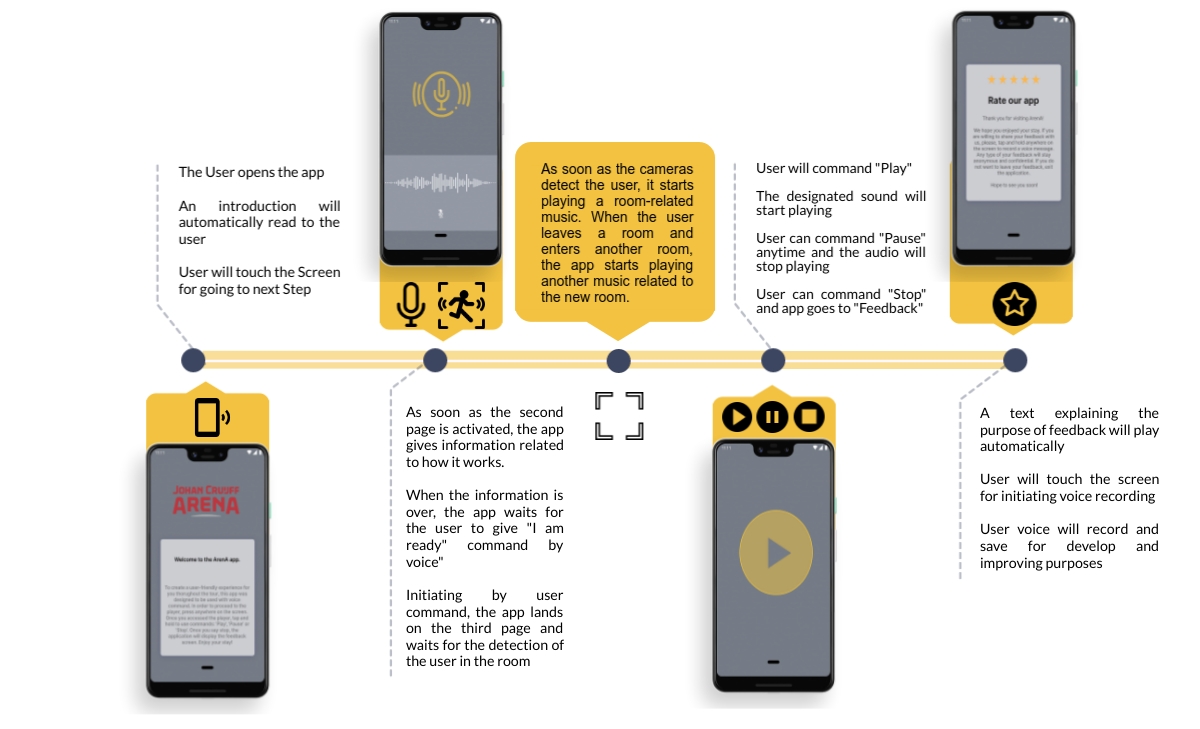
More explanation about technical aspects of the application is shown in the next picture.

The story of user using the Inclusive ArenA is demonstrated in the picture below.

In the next picture you can explore the emotional journey of the user when interacting with our application
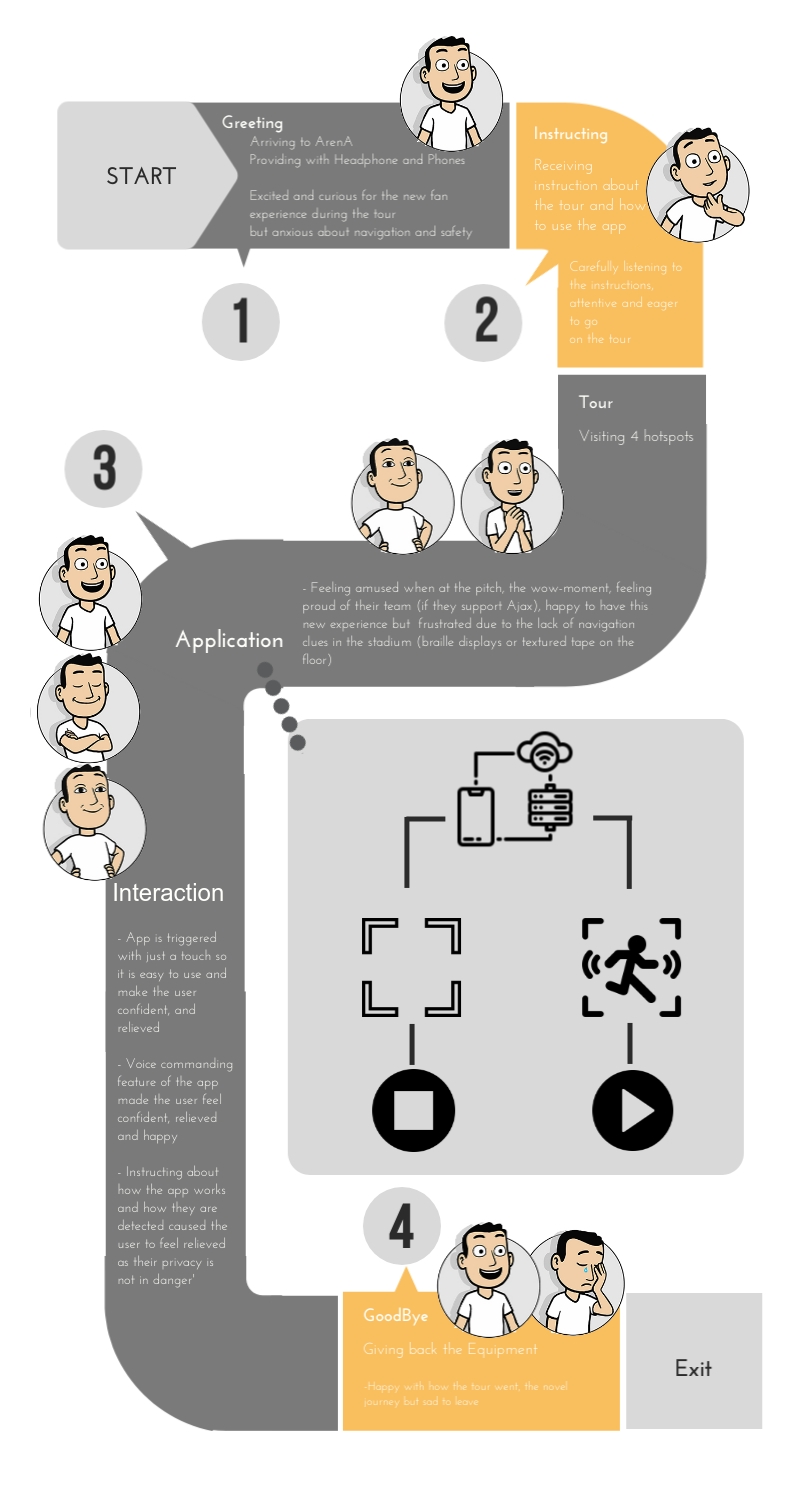
Meet The Team

Our multidisciplinary team came together from six different countries. Bringing in various experiences and expertise from different fields in this project. We did this project as a team which helped us learn from eachother. We would eager to go beyond our skills and experience new things . We brainstormed and researched together, However, there were also specefic tasks wach of us was responsible for.
Dan Xu
Team Coach

The support system of the project.
She was always there for us with her excellent feedback and ideas.
Boshra Javaheri
Experience Designer
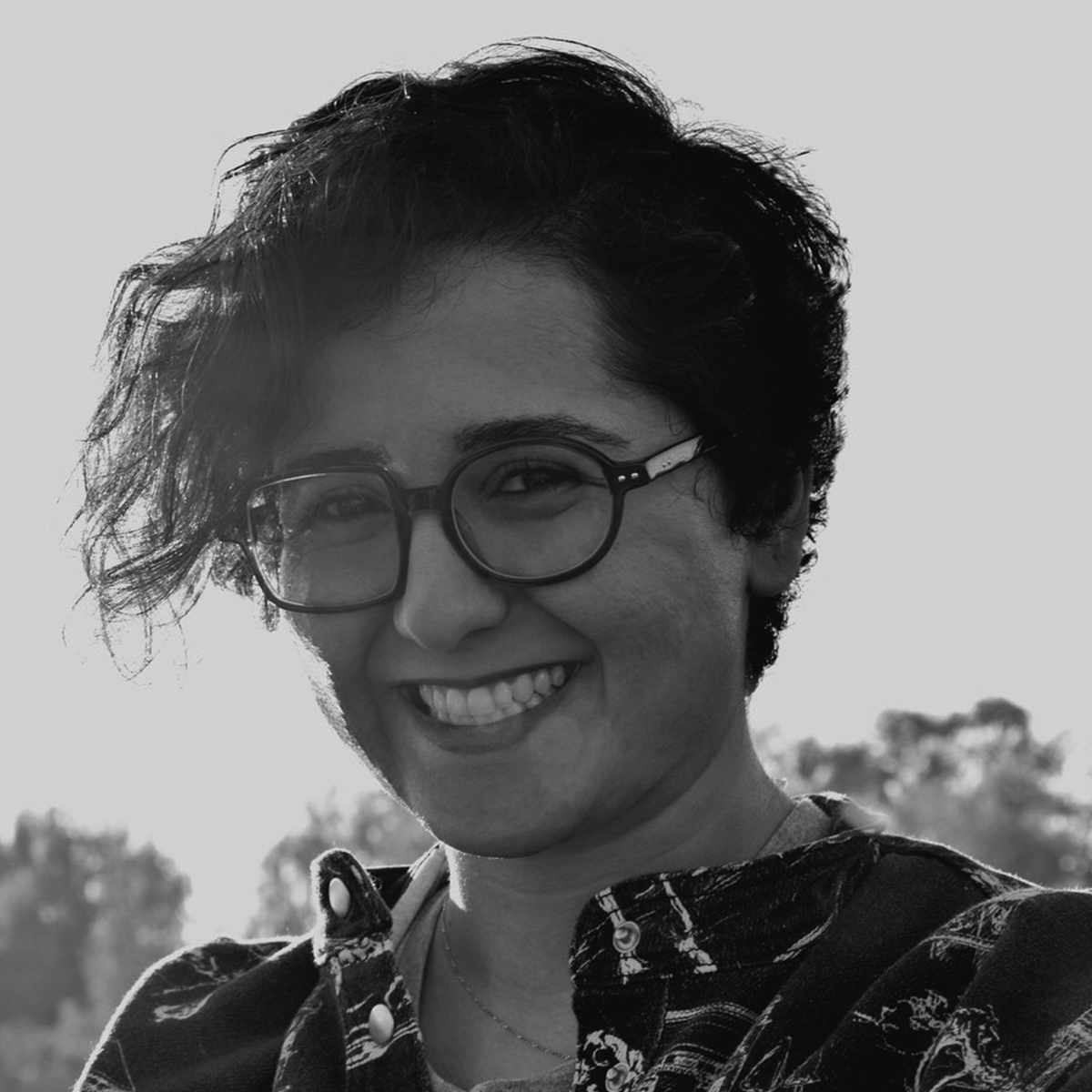
The eye of the project.
She was responsible for designing and creating the materials and keeping an eye on details. She
researched and participated in writing the contents. Also, she created the website, UX of the
application, and the layout of the guidebook. Almost everything visual should have passed her.
Cemal Dagli
Electrical Engineering

The hands of the project.
He brilliantly converted our ideas to the reality and made all of them possible. He is the
mastermind behind the technical part of the prototype and did so much hard work to deliver the best
of what we think of using different tools and technologies.
Viktoriia Akhankova
Communication scientist
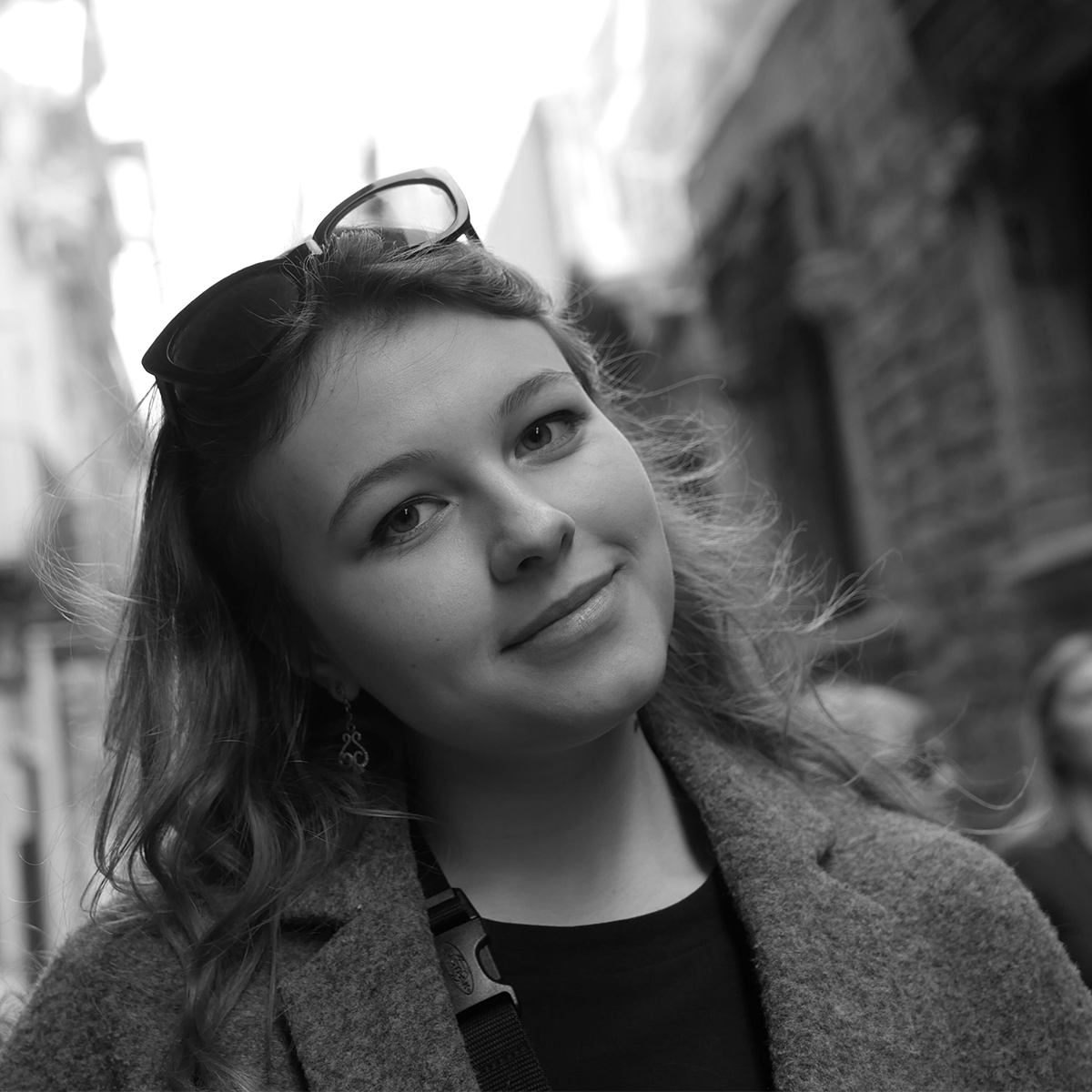
The sound of the project.
Her talent to put everything into a simple word helped us to present and document our ideas
thoroughly. She was responsible for writing the contents of the manual, desk and user research,
external communication and creating a pitch video to present the project to different stakeholders
Eden Oliveira
Entrepreneur
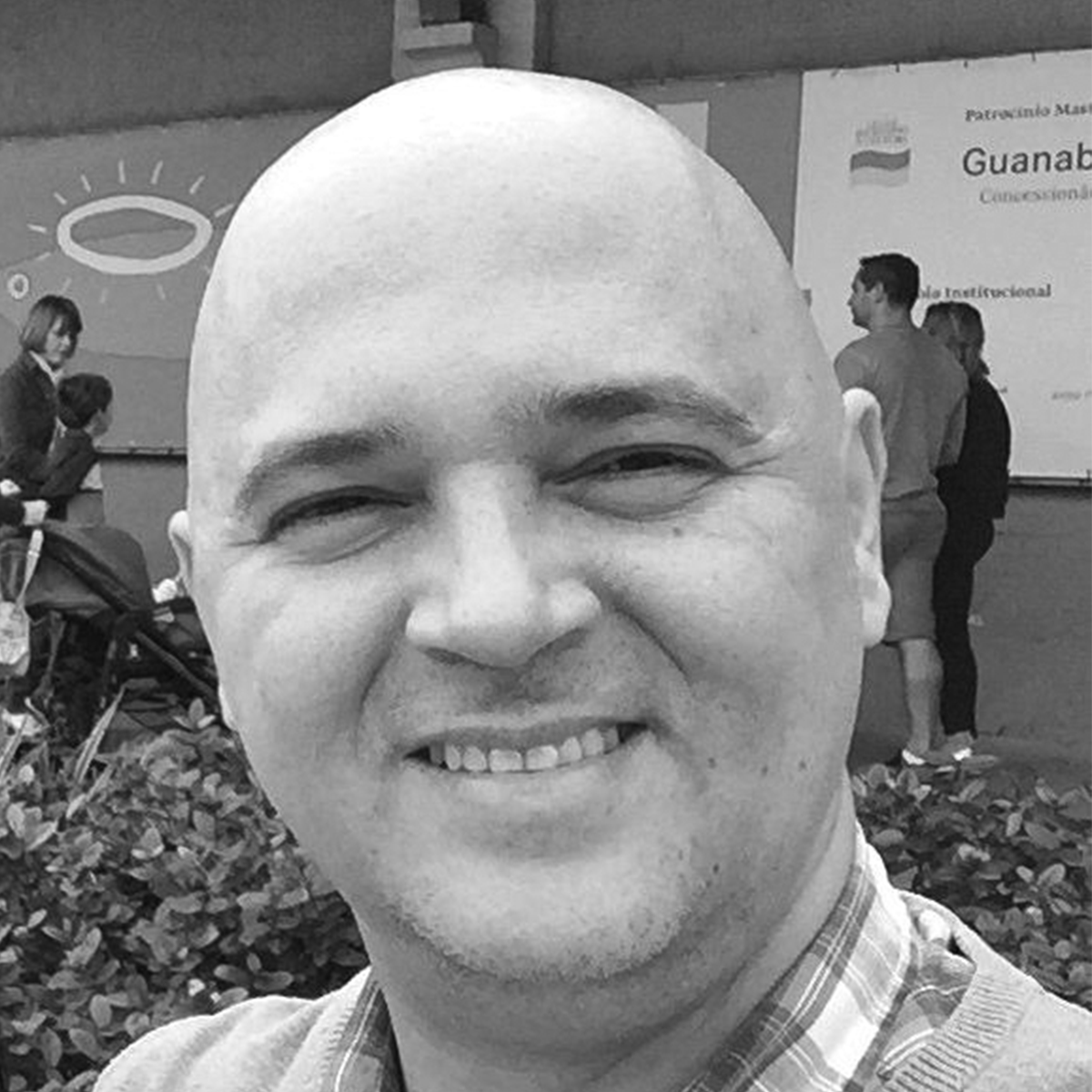
The ears of the project.
Since he had a background in the music industry, he was the best person to design and implement
the 3D sounds of the application.
Sumaya Omar
Biomedical Engineer
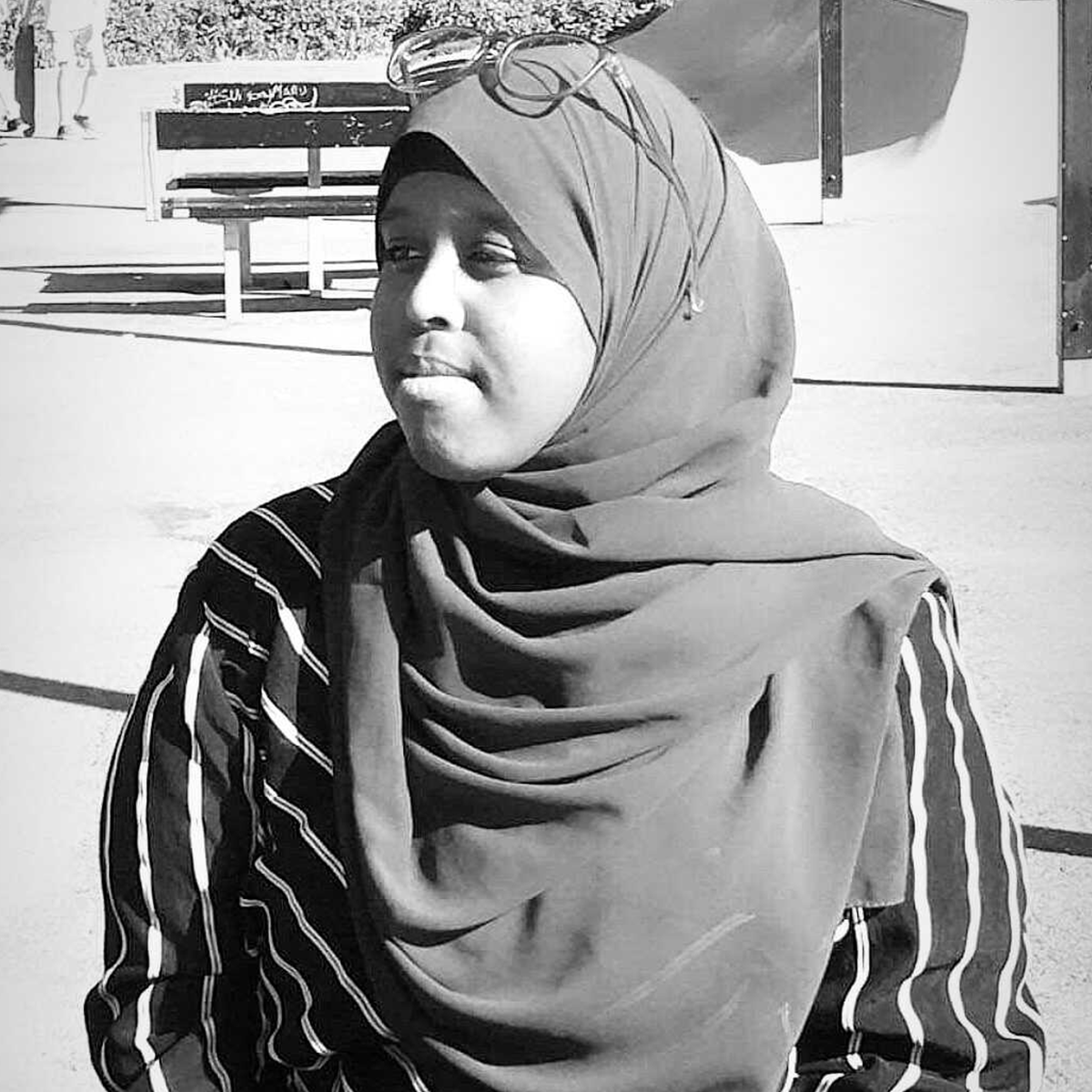
The legs of the project.
She did this excellent job in the role of a product owner in connecting all the parts. she
managed the tasks and the meetings to be more efficient and make the team more productive. Next to
that, she researched, edited and animated one the final videos.
Partners
A big Thank You from Sauron team to Digital Society School and all the stakeholders involved in this project, who helped us all the way. Mr. Jan Woering from ArenA provided access to ArenA, provided information and more importantly gave constructive feedback in every sprint review. Mr. Dick Lunenborg from Bartimeus who helped us to understand the context of the project better and made ideation for designing this experience easier. We would like to thank Mr. Paul De Nooij from Bartimeus, Woute Groot, Ruben Logjes, Vasilis van Gemert from Hogeschool van Amsterdam for providing feedbacks and ideas during our meetings.

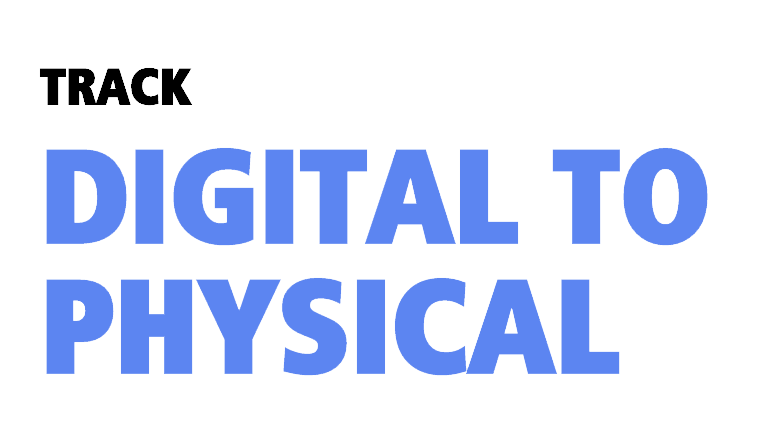


Contact Us
Please send us your feedback. We would love to hear from you.
